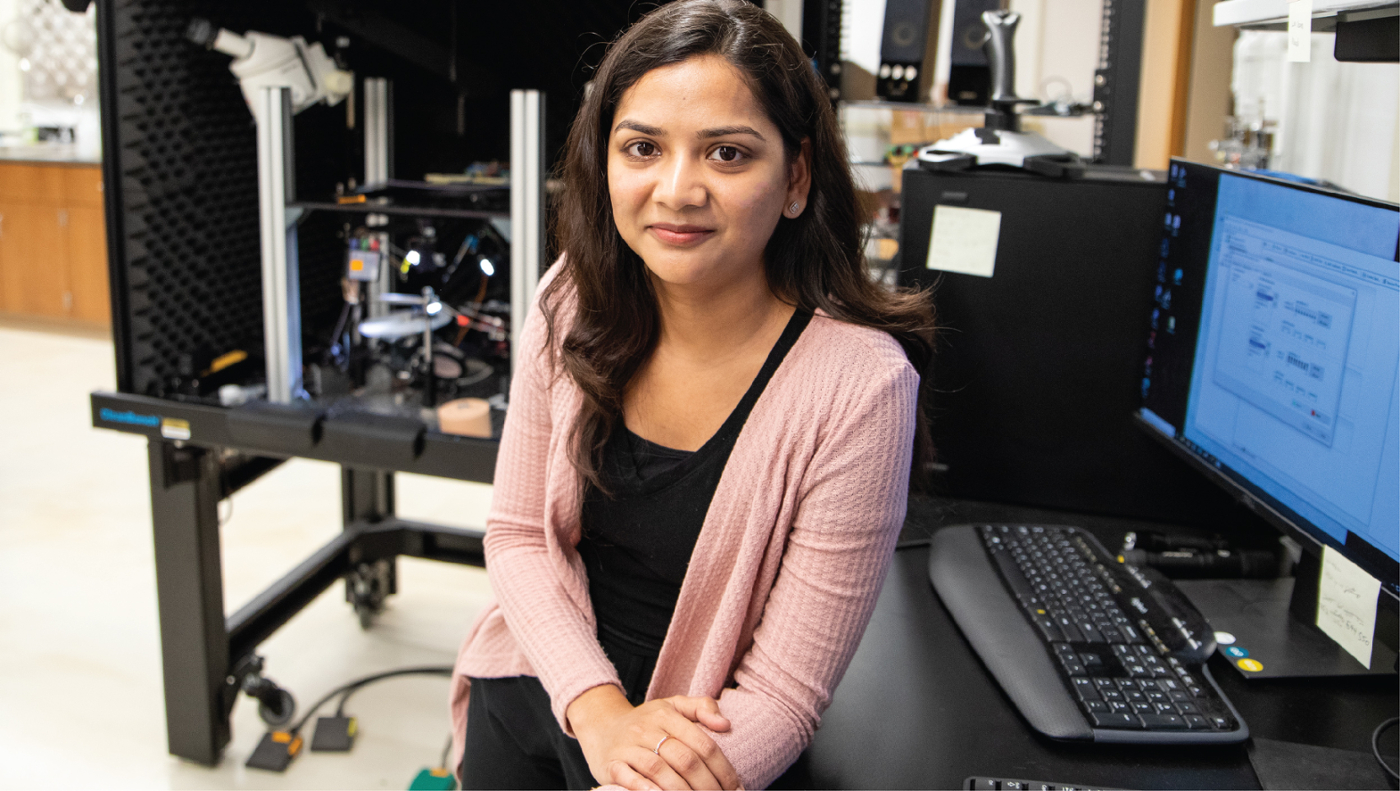Deciphering the Mysterious Signals of the Brain
11-06-2023

In a quiet laboratory at Purdue University, Suma Chinta observes with keen fascination as a mouse scurries on a miniature wheel. The mouse's whiskers move rhythmically as it scans the unfamiliar surroundings of a virtual environment. To an onlooker, this might appear to be just a curious experiment, but to Chinta and her team, it's a window into the complex world of the neural responses behind sensory perception.
Understanding the Brain's Signals
Chinta's research at Purdue University delves deep into the intricate mechanisms that govern how mice perceive and react to their environment. The focus of her work is on differentiating between self-initiated movements and external motion – a puzzle that has far-reaching implications for understanding the human brain's response to sensory information.
To investigate this phenomenon, Chinta and her team created a virtual reality for mice. In this controlled environment, mice use their whiskers to sense their surroundings. The experiment is designed to replicate the scenario in which a mouse encounters unexpected motion as it navigates its environment.
The results of this experiment are nothing short of astonishing. As Chinta explains, "We found that the mice's brains had a special way of reacting when something moved unexpectedly." This unique neural response occurs in a specific region of the mouse brain known as the Superior Colliculus (SC). Interestingly, this response is significantly smaller when the sensation is caused by the mouse's own movements.
The Brain's Warning Mechanism
The significance of this discovery lies in the role of the neural response as a warning mechanism. When an external stimulus, like a sudden movement, occurs in the mouse's proximity, the SC reacts with a large transient response. This reaction can be seen as a mechanism that alerts the mouse to potential dangers arising from movements in its environment. It serves to heighten the mouse's awareness and readiness to respond.
Conversely, when the mouse's own movements cause a similar sensation, the neural response is notably diminished. This suggests that the brain has an innate ability to distinguish between self-generated movements and external stimuli, actively suppressing the expected consequences of self-motion.
Localization: A Crucial Skill
An additional layer of intrigue lies in the neural response's role in localization. Chinta points out, "This neural response was also informative in deciphering where in the surrounding space the movement occurred." This capability is pivotal for mice, as well as other animals, to interact with their environment accurately.
The ability to pinpoint the source of unexpected external sensations is vital. Just as humans instinctively turn towards the friend tapping their shoulder or navigate through crowded spaces without colliding, this study hints at how our brains may possess special mechanisms to swiftly and accurately determine the source of external stimuli.
Bridging the Gap to the Real World
Chinta's research is not confined to the laboratory. The implications of her work extend far beyond academia and into the practical realm. Understanding how the brain processes sensory information to distinguish between self-initiated and external movements has profound implications for various fields:
- Neuroscience and Medicine: The insights from this research have the potential to inform treatments for sensory processing disorders and conditions like Parkinson's disease, where movement control is impaired.
- Robotics and Artificial Intelligence (AI): Chinta's work can contribute to the development of robots and AI systems that can better navigate dynamic environments, making them more efficient and adaptive.
- Virtual Reality (VR) and Augmented Reality (AR): Her research may enhance VR and AR systems, enabling them to provide more natural responses to user actions and external changes, creating a more immersive and engaging experience.
Suma Chinta's journey from mechanical engineering in India to pioneering research at Purdue University is a testament to the power of curiosity and determination. Her work promises to unravel the mysteries of the brain's response to sensory stimuli, with implications that span across multiple disciplines. As Suma continues her quest to understand the enigmatic signals of the brain, the world watches in anticipation of the practical applications that may emerge from her groundbreaking research.
Written by Alisha Referda, Communications Specialist